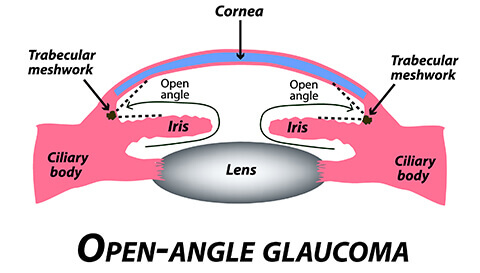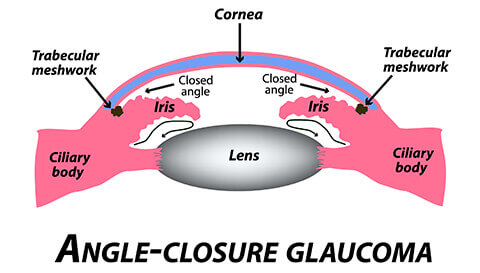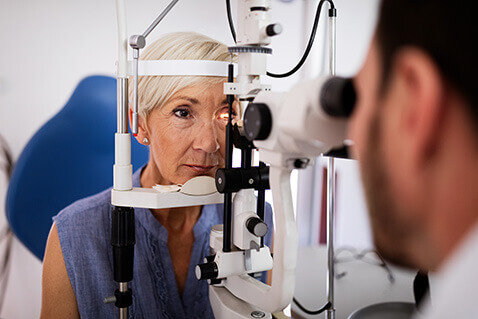Learn More About Glaucoma
There are two basic types of glaucoma. They include:

Open-angle glaucoma, the most common type that occurs in approximately 90 percent of those who suffer from the disease. This condition can develop gradually and undetected for years, slowly damaging vision. In early stages of open-angle glaucoma, medicated eye drops are usually prescribed to lower the eye’s pressure. If the condition worsens, a laser procedure called a trabeculoplasty is performed to lower pressure further. Laser therapy usually takes approximately 10 minutes and has achieved excellent success rates in select patients.

Angle-closure glaucoma, which is much more rapid in the onset, affects less than ten percent of glaucoma patients. Symptoms occur suddenly and are much more severe, but vision can be preserved with prompt, effective treatment. The treatment for angle-closure glaucoma, or narrow-angle glaucoma, is generally initiated with laser iridotomy to open the drainage channels of the eye.
The exact cause of primary open-angle glaucoma, is unknown. However, some of the other forms of glaucoma may occur along with other abnormalities of the eye.
There are usually no symptoms at first, but as the disease progresses, a person with glaucoma may notice his or her vision gradually failing with:

- Blurred vision
- Loss of peripheral vision
- Difficulty focusing on objects
- Presence of halos around lights
Although anyone can develop glaucoma, those who are at higher risk and should have an eye exam at least every one to two years include:
- African Americans over age 40
- Individuals over age 50
- People with a family history of glaucoma
- Individuals who have experienced a serious eye injury
- People with other health conditions, such as diabetes. (Individuals with diabetes should have an exam every year)
Importance of Early Detection
There are no symptoms. You don’t feel any different. Though some individuals are more at risk than others, it can afflict anyone. It can sneak up on you and steal your most valuable asset… your eyesight. Glaucoma, undetected, can eventually lead to blindness.
In the past, ophthalmologists would suspect a problem based on certain telltale signs such as elevated intraocular pressure or a decrease in one’s peripheral vision, but by then, glaucoma could already have done significant damage to eyesight. With today’s advanced technology, we have the ability to foresee potential problems well before glaucoma sets in.

Does glaucoma testing take long?
Not at all. You can be screened for glaucoma in less than 30 minutes
Does glaucoma testing hurt?
No. The tests are painless and leave no after-effects.
What if the screening shows that there is a problem?
At that point, further examination is recommended to confirm glaucoma. If the diagnosis of glaucoma is confirmed, the sooner we begin treatment, the better.
At Eye Group of Connecticut, we utilize one of the most technologically advanced pieces of ophthalmic diagnostic equipment used today. The OCT or Ocular Coherance Tomography, is a sophisticated system that can visualize the individual layers of the retina. We can now directly measure structures in the retina that are susceptible to glaucoma damage at a very early stage, before symptoms arise.
That image and analysis then becomes a part of your permanent medical record. On future visits, we can compare images, note any changes, analyze, precisely diagnose, and recommend treatment.
What are the treatment options for glaucoma?

That’s the good news. There are a number of highly effective treatment options for glaucoma patients. Most patients are started on eye drops as the initial treatment. Laser therapy may be appropriate for certain forms of glaucoma. Finally, if medical or laser therapy fails to control the disease, surgical therapy may be necessary. Fortunately, with early detection, most forms of glaucoma can be successfully treated and visual loss may be halted.
Early detection and treatment is the only way to combat vision loss caused by glaucoma.
If you’ve noticed change in your vision, or if you haven’t been to the office for a while, and would like to be tested for glaucoma, contact Eye Group of Connecticut to set up an appointment today.
